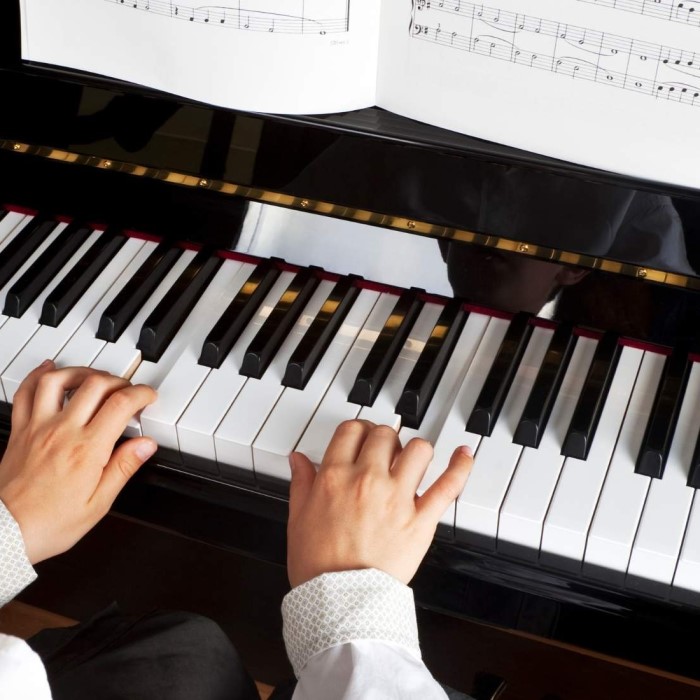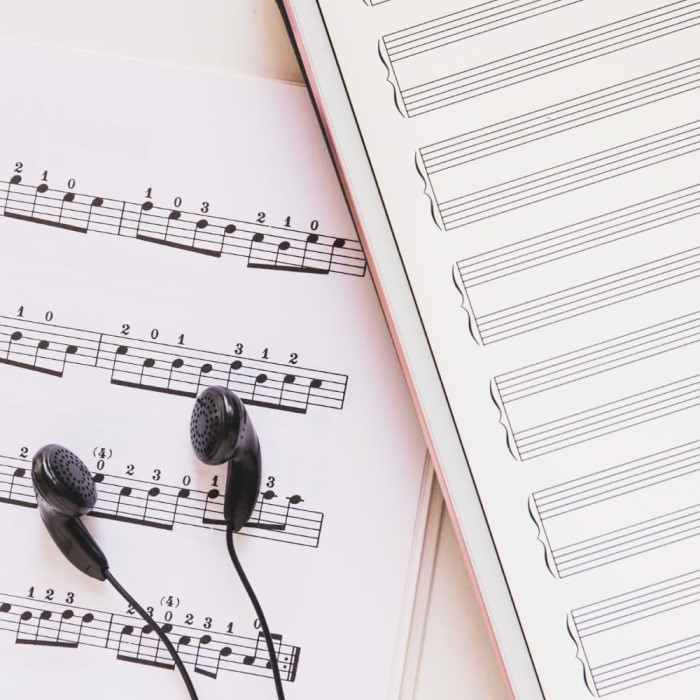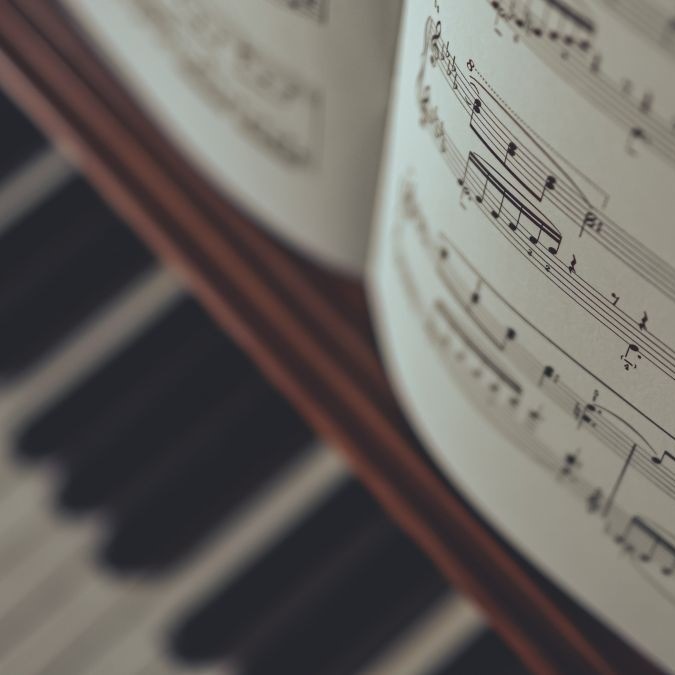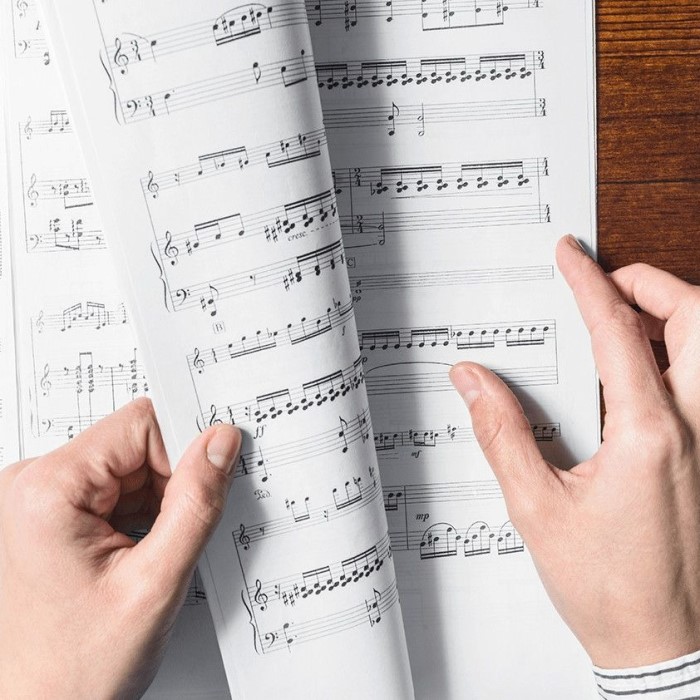Introduction to Piano Sheet Music
Piano sheet music is a formal way to represent music using symbols and notes. It serves as a visual guide for pianists to play compositions accurately. Understanding how to read piano sheet music is essential for beginners and advanced pianists alike.
Sheet music consists of various components designed to communicate musical ideas. These include the staff, clefs, notes, rhythms, and other symbols. By learning these components, musicians can interpret how each note and rhythm relate to the piano’s keys.

Learning piano sheet music helps one play melodies, harmonies, and complex compositions. It allows pianists to explore different genres and pieces written by composers from diverse musical traditions. Accurate reading also enhances your ability to play in ensembles or accompany singers.
For novice pianists, recognizing the basic layout of sheet music is crucial. Familiarize yourself with its structure to ensure a smoother learning process. Gaining confidence in reading sheet music builds the foundation for growth in piano-playing skills.
Key Components of Piano Sheet Music
Understanding the key components of piano sheet music is vital for every pianist. These elements help musicians interpret and play a piece accurately. Below are the primary components you need to know:
Staff and Clefs
The staff consists of five horizontal lines and four spaces where notes are placed. Notes on the staff represent different pitches. The position of the note on the staff corresponds to the key you play on the piano.
Clefs are symbols at the beginning of the staff, indicating the pitch range. The two most common clefs are the treble clef and bass clef. The treble clef is used for higher notes, often played with your right hand. The bass clef is for lower notes, generally played with your left hand.
Sometimes, other clefs like the alto or tenor clef appear in advanced music. Start by focusing on the treble and bass clefs to build your foundation.

Notes and Their Values
Notes represent musical sounds and their duration. They are symbols placed on the staff. The shape of the note indicates how long you should hold it while playing.
- Whole Note: Held for four beats.
- Half Note: Held for two beats.
- Quarter Note: Held for one beat.
- Eighth Note: Held for half a beat.
- Sixteenth Note: Held for a quarter of a beat.
Learning how to count and play different note values is essential for rhythm.
Time Signatures
Time signatures are numbers placed at the beginning of the staff. They indicate the rhythm of the music. The top number shows how many beats are in each measure. The bottom number shows which note represents one beat.
For example, a 4/4 time signature means four beats per measure, and a quarter note equals one beat. A 3/4 time signature has three beats per measure, often creating a waltz feel.
Be sure to count the beats carefully when practicing with different time signatures.
Dynamics and Articulations
Dynamics tell you how loud or soft to play. They are shown with specific markings:
- p (piano): Soft.
- f (forte): Loud.
- mf (mezzo-forte): Moderately loud.
- crescendo ( < ): Gradually play louder.
- diminuendo ( > ): Gradually play softer.
Articulations indicate how to play each note. For example:
- Staccato: Play short, detached notes.
- Legato: Play notes smoothly and connected.
- Accent: Stress on a specific note.
Mastering these symbols adds expressiveness to your playing.
By familiarizing yourself with these key components, you’ll learn how to read piano sheet music more effectively. Practice consistently and refer to these elements to enhance your understanding and skills.
How to Identify Notes on the Piano
Learning to identify notes on the piano is essential for successful playing. It helps you connect written sheet music to physical keys on the keyboard. By understanding the layout of a piano, you can easily locate the specific notes and gain confidence when playing.
- Understand the Piano LayoutThe piano has a repeating pattern of white and black keys. Each set contains seven white keys (A to G) and five black keys. Black keys are grouped in twos and threes, aiding orientation.
- Learn Note PositionsNote positions follow a sequence: A-B-C-D-E-F-G. After G, it loops back to A. For reference, middle C is near the middle of the piano and helps orient all notes.
- Locate Black KeysBlack keys represent sharps (#) or flats (?). For example, the black key to the right of C is C#. The black key to the left of D is D?. Black keys help you play sharp or flat notes.
- Understand OctavesThe white keys span multiple octaves. Each octave repeats the same note sequence (A-G). Knowing octaves helps when identifying notes higher or lower on the keyboard.
- Practice Note IdentificationFamiliarize yourself with each key by regularly practicing. Start with middle C and move through the sequence. Use flashcards or apps to drill your note recognition skills.
With consistent practice, identifying notes on the piano becomes second nature. Keep in mind that strong note recognition also improves coordination between your hands.
Tips for Reading Piano Sheet Music Accurately
Reading piano sheet music accurately takes practice and focused strategies. By adopting effective techniques, you can improve your skills over time. Consider the following tips to enhance your piano sheet reading abilities:
- Start Slow and SteadyPlay at a slow tempo to focus on accuracy and understanding. Gradually increase speed as you improve.
- Break Music into SectionsDivide the sheet music into smaller sections. Practice one section at a time before combining them.
- Identify Key Signature and Time SignatureBefore beginning, note the key signature and time signature. They set the tone and rhythm.
- Analyze the NotesLook for patterns, scales, or repeated phrases. This helps simplify complex pieces.
- Use Finger NumbersFollow the suggested fingerings on the sheet. They guide proper hand placement and ease playing.
- Practice Hands SeparatelyPractice each hand’s part independently. Focus on one hand at a time before combining them.
- Count the BeatsUse a metronome to maintain rhythm. Count the beats aloud while practicing.
- Look for Dynamics and ArticulationsObserve dynamics (soft/loud) and articulations (smooth/detached). Use these to add expression.
- Keep Your Eyes on the MusicAvoid looking at your hands frequently. This improves sight-reading and muscle memory.
- Consistent PracticeDedicate regular time to practicing sheet music. Focused effort leads to steady progress.
- Mark the Sheet MusicWrite helpful notes or circle tricky parts. Highlighting key areas makes reading easier.
- Stay Patient and PositiveLearning takes time. Celebrate small achievements and keep improving.
By following these tips, you can gain confidence and precision in reading piano sheet music. Regular practice and attention to detail will help you master this essential skill.
Common Notation Symbols and Their Meanings
Learning common notation symbols is key to mastering how to read piano sheet music. These symbols help communicate musical instructions effectively. Understanding their meanings is crucial for accurate and expressive playing. Below are some essential notation symbols that every pianist should know:
Sharps and Flats
- Sharp (#): Raises the pitch of a note by a half step.
- Flat (?): Lowers the pitch of a note by a half step.
- These symbols are placed before a note on the staff, indicating a change in pitch.
Natural
- Natural (?): Cancels out sharps or flats and returns the note to its original pitch.
- Often used to counter a previous sharp or flat within the same measure.
Rests
- Whole Rest: A pause lasting for four beats.
- Half Rest: A pause lasting for two beats.
- Quarter Rest: A pause lasting for one beat.
- Eighth Rest: A pause lasting for half a beat.
- Sixteenth Rest: A pause lasting for a quarter of a beat.
Fermata
- Fermata: Indicates that a note or rest should be held longer than usual.
Accidental Signs
- Double Sharp (?): Raises a note’s pitch by two half steps.
- Double Flat (?): Lowers a note’s pitch by two half steps.
Repeat Signs
- Repeat Barline (||: :||): Signals to repeat a specific section of the music.
- Follow arrows or instructions for repetitions.
Slurs and Ties
- Slur: Connects notes to be played smoothly and without separation.
- Tie: Connects two notes of the same pitch, combining their duration.
Pedal Marks
- Damper Pedal Mark (“): Indicates when to press and release the pedal for sustained sound.
Ornamentation Symbols
- Trills (tr): Rapid alternation between the written note and the one above it.
- Grace Notes: Small notes played quickly before the main note.
- Turns: Indicate a specific group of notes played in a circular motion.
Crescendo and Decrescendo
- Crescendo ( < ): Gradually increase the volume.
- Decrescendo ( > ): Gradually decrease the volume.
Familiarizing yourself with these symbols will make reading sheet music much easier. Practice identifying and applying them in different compositions. This knowledge gives you more control and artistry while playing on the piano.
Strategies for Improving Piano Sheet Music Reading Skills
Improve your ability to read piano sheet music with targeted and effective strategies. Here are practical tips to take your reading skills to the next level:
- Practice DailyConsistent practice builds muscle memory. Spend at least 15–30 minutes daily reading sheet music.
- Master Note RecognitionUse flashcards or apps to memorize note names and their positions on the staff and piano keys.
- Understand Key SignaturesFamiliarize yourself with key signatures. Practice scales to grasp flats and sharps better.
- Work on Sight ReadingPractice sight-reading simpler pieces first. Gradually increase difficulty as your skills improve.
- Learn Rhythmic PatternsFocus on common rhythm patterns. Tap the rhythm out loud before playing a piece.
- Use a MetronomePractice with a metronome to develop steady timing. Start slow and gradually increase speed.
- Break Music into Small SectionsDivide challenging compositions into smaller parts. Practice each section individually until perfect.
- Look Ahead While ReadingTrain your eyes to read a few notes ahead. Anticipation helps improve fluidity in your playing.
- Mark the Sheet MusicHighlight key points, fingerings, or challenging sections to stay organized while practicing.
- Practice Scales and ArpeggiosScales and arpeggios help recognize patterns in music, making reading notes easier.
- Improve Hand CoordinationPractice hands separately. Once comfortable, combine them and focus on synchronizing both hands.
By applying these strategies, you can steadily improve how you read piano sheet music. These practices will enhance both your technical skills and musical confidence.
Frequently Asked Questions about Piano Sheet Music
What is the purpose of piano sheet music?
Piano sheet music provides instructions for playing specific compositions. It helps musicians interpret notes, rhythms, and dynamics.
Do I need to learn to read sheet music to play piano?
No, you can play by ear or use tutorials. However, sheet music improves accuracy and versatility.
How long does it take to learn to read piano sheet music?
Learning basics may take weeks or months. Mastery requires continuous practice over years.
Is reading piano sheet music difficult for beginners?
It can be challenging at first. Focus on small steps like recognizing notes and rhythms.
What are the easiest notes to start with?
Begin with middle C and nearby notes. Gradually expand to different octaves on the keyboard.
How do sharps and flats work in sheet music?
Sharps raise pitch by a half step; flats lower pitch by a half step. They affect specific keys.
How do I know which hand to use for notes?
Sheet music indicates hand placement. Treble clef notes are played with the right hand, bass notes with the left.
Can digital tools help me read sheet music?
Yes, apps and software provide interactive learning, assisting with note recognition and rhythm practice.
What is the best way to memorize the notes?
Use flashcards, apps, or consistent drills to memorize note positions. Daily practice improves memory.
Should I mark my sheet music?
Yes, marking helps highlight tricky sections or key points, especially for beginners.
How can I improve my sight-reading skills?
Practice simple pieces regularly. Develop the habit of looking ahead while playing.
Can I play piano without reading sheet music?
It’s possible, but reading music opens doors to playing complex songs and working with ensembles.
Are dynamics and articulations important in sheet music?
Yes, they add expression and emotion to your performance, improving musical quality.
What should I do if I get stuck on specific notes?
Slow down, break the section into parts, and practice repeatedly until mastered.
Is it necessary to count beats while reading music?
Yes, counting beats ensures rhythm accuracy, especially when playing more complex compositions.
Understanding these FAQs can guide you in navigating piano sheet music and overcoming common challenges. Dedicate time to practice and explore resources for continuous improvement.
Conclusion: Continuously Evolving Your Skills
In conclusion, mastering how to read piano sheet music is an indispensable skill that opens doors to your musical potential. With the right mindset, practice techniques, and resources at your disposal, becoming proficient in music reading is entirely achievable.
Embrace your journey as a pianist, continuously seeking knowledge and improvement. Regular practice, combined with patience and the use of technological tools, will help enrich your playing experience. Remember, every expert was once a beginner. Keep moving forward, and soon, you will find yourself immersed in the joy of music.


